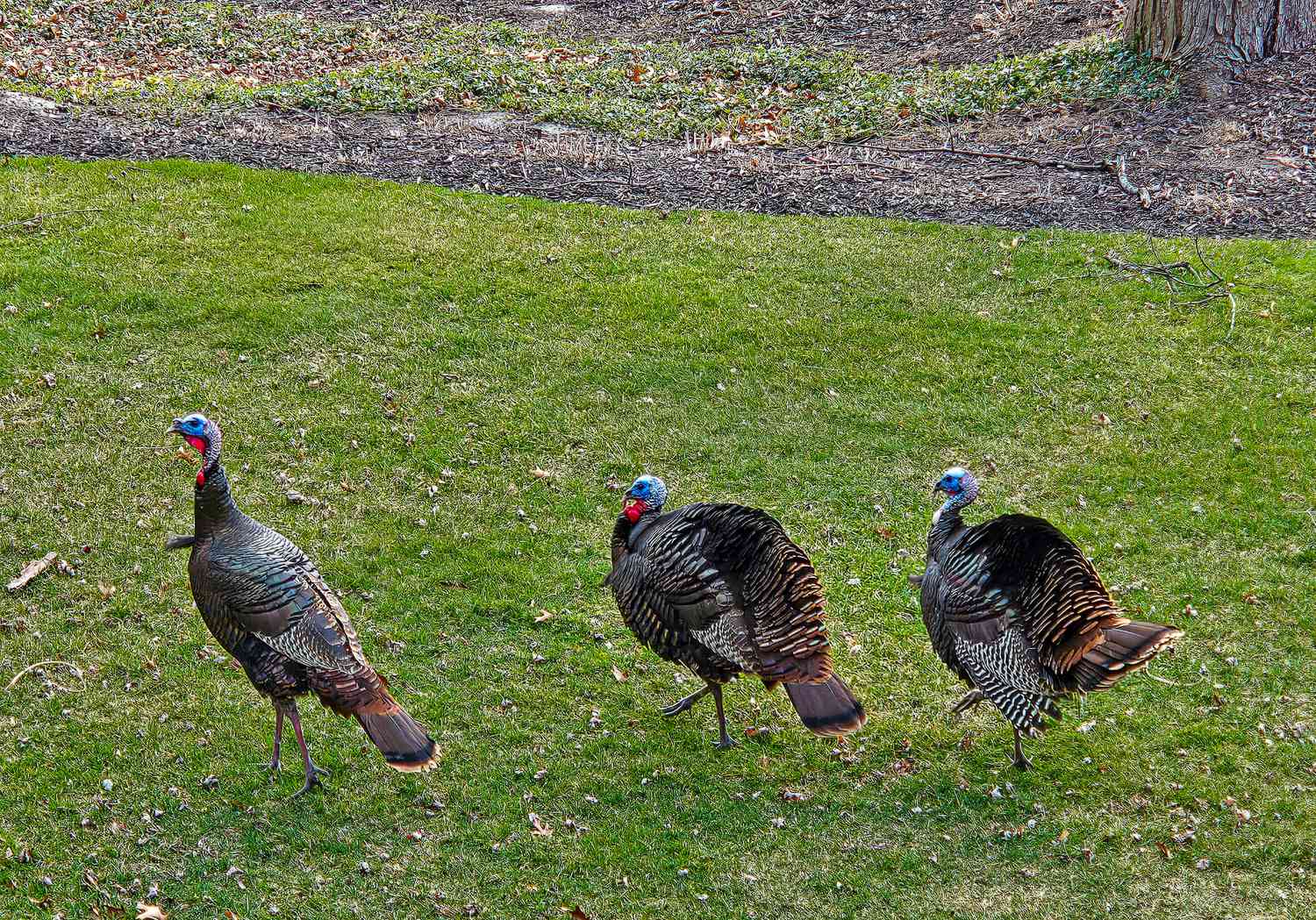:max_bytes(150000):strip_icc():format(jpeg)/GettyImages-2102630296-2d237ed0bd5a469fa50d994625794c1d.jpg)
Wild turkeys are beautiful birds that are found across the Southeast in woodlands, fields, orchards, and even in your yard. “Although they’re not a problem for most homeowners, the birds can sometimes be a nuisance,” says Sheldon Owen, PhD, wildlife extension specialist at West Virginia University. “They feed on insects, nuts, seeds, and plants, so they can cause damage if they get into a garden or if you’re trying to reseed a lawn. They also take dust baths so they could trample young plants.”
While turkeys prefer landscapes that are about half forested for cover and food, and half open for mating, nesting, and rearing babies, they aren’t picky. “They’ll go wherever the food is plentiful,” says Robert Pierce, PhD, associate professor and state extension fisheries and wildlife specialist at the University of Missouri. “If turkeys become habituated to people, they will feel comfortable and may wander through your yard and garden.”
- Sheldon Owen, PhD, is a wildlife extension specialist at West Virginia University.
- Robert Pierce, PhD, is an associate professor and state extension fisheries and wildlife specialist at the University of Missouri.
Fortunately, turkeys don’t transmit diseases that affect people or pets, though they can carry parasites such as mites and ticks. But a flock that spends time in your yard will leave behind droppings (though it’s usually not as bad as geese, which gather in larger numbers). Sometimes, males may become aggressive toward people. But the biggest issue is that you may not want turkeys scratching up garden beds or mulched and landscaped areas, says Owen.
Understanding Wild Turkeys
Males are about 17 to 21 pounds, while females weigh about 8 to 11 pounds. Turkeys prefer to walk or run, though they can make short flights. They have excellent vision and hearing. Unfortunately, their numbers are declining in some regions, and it’s not known exactly why, says Pierce.
Turkeys hatch in late spring and early summer. They’re ground nesters, so mortality is high because the eggs may be eaten by skunks, raccoons, and opossums, while young turkeys are at risk from coyotes, foxes, hawks and owls, says Pierce.
In late summer and fall, turkeys flock together. Winter flocks are the largest, often with 20 or 30 turkeys in a group. Their range can be a few square miles, based on the availability of food, so they may come through your yard once a day or every so often depending on how far they need to forage , says Owen.
Interestingly, research has found that the damage most people think is caused by turkeys often is the work of other wildlife, such as raccoons, deer, voles, or other bird species, says Pierce.
How To Keep Wild Turkeys Away From Your Yard
Turkey usually aren’t a huge problem for homeowners, but if you have some frequent or destructive visitors, you can try these tips:
- Get a positive ID. If damage is occurring overnight, it’s not caused by turkeys, which like to roost in trees to stay out of danger from nighttime predators. Set up a game cam to figure out what’s doing the damage, says Owen.
- Remove birdfeeders. Turkeys are opportunistic feeders and will return if the eating is good, says Pierce.
- Try scare tactics. Use techniques such as silver mylar tape, which will flutter in the breeze when hung from fence posts. Or try inflatable scarecrows, which move sporadically to frighten the birds, says Owen.
- Clean up brush piles. This may reduce insects that are attracting turkeys, says Pierce.
- Fence or use netting around garden areas. Although turkeys can fly, they need a running start and typically aren’t going to enter a small fenced area, says Owen.
- Don’t rely on repellants, predator silhouettes, or other folk remedies. Like all wild creatures, as soon as they figure out there’s nothing to fear, they’ll ignore it, says Owen.
- Be patient. They likely aren’t going to stay year-round because they forage on whatever is abundant and locally available by season. “Although they do cause damage, the extent is typically very small compared to other species,” says Pierce.
